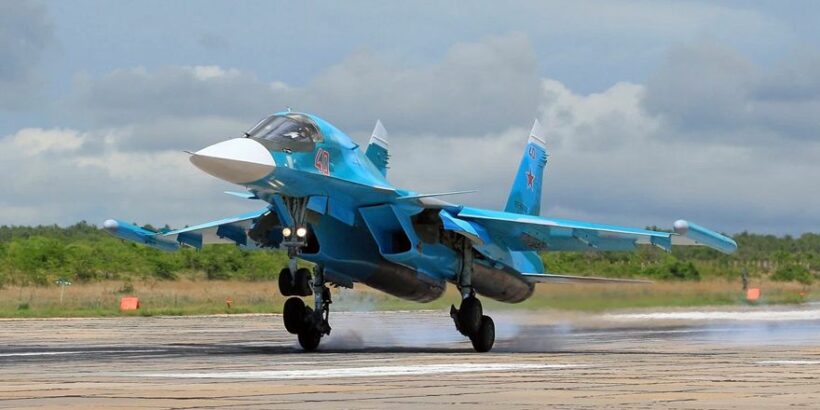The first flight of the Su-34 multifunctional fighter-bomber developed by the Pavel Sukhoi Design Bureau took place on 18 December 1993. This aircraft combines the qualities of a front-line bomber and a fighter.
The Su-34 development project began in 1980, when the Sukhoi Design Bureau started to create a strike variant of the Su-27 fighter. The subject was given the index 10Sh (Su-27Sh), and from 1983 – 10B (Su-27IB). The Su-27UB two-seat combat trainer aircraft was taken as the basis.
In 1983, even the customer – the Ministry of Defence and the Air Force leadership – did not have a full understanding of what an attack aircraft based on the Su-27 should be. As a result, the stage of mutual coordination of requirements for the aircraft dragged on until 1986.

In 1983-84, the Sukhoi Design Bureau continued active design work on Su-27 strike variants. Thus, a “futuristic” project for a deep upgrade of the Su-27 was proposed: the 10E bomber (Su-34), based on the Supersonic Cruise and Maneuver Prototype (F-16XL-type wing), and later the 10P reconnaissance aircraft, but neither the Ministry of Defence nor the IAP were interested in these proposals.
In 1986, on the initiative of General Designer Mikhail Simonov, the tandem crew layout was changed to a side-by-side configuration – the cockpit became similar to the cockpit of a larger two-seat aircraft. The project was given the factory code 10B, and Rollan Martirosov was appointed as its manager.
On 19 June 1986, the USSR Council of Ministers issued a decree, which became the official basis for the development of a new front-line bomber. On 15 October, the relevant order was issued by the Ministry of Aviation Industry, under which the Sukhoi Design Bureau was officially given the task of developing the Su-27IB.
The first pre-production aircraft with the cipher 10B-2 in the standard configuration was built by the Novosibirsk Aviation Production Association named after V.P. Chkalov. V.P. Chkalov Aviation Production Association. It was completed in late autumn 1993. The first flight was performed on 18 December by a crew consisting of test pilots Igor Votintsev and Evgeny Revunov. On Mikhail Simonov’s initiative, it was assigned a new designation – Su-34 – literally on the same day.
Igor Votintsev recalls his impressions of the first Su-34 flight: “It was an unforgettable moment. We felt part of history, part of the team that created this amazing aircraft. The Su-34 demonstrated amazing flight characteristics and showed its potential in the air. I was proud to be entrusted with the opportunity to test this machine.”
Vladimir Mikhailov, who supervised the production of the Su-34 at the plant, also recalls this period: “We faced many technical and organisational difficulties, but thanks to our hard work and perseverance, we were able to achieve success. The Su-34 became a new turn in the development of Russian aviation, and I am proud to have been part of this process.”
In the 1990s, due to chronic underfunding, work on finalising the aircraft was difficult. State testing of the Su-34 could only begin in December 1996. During these years, the Sukhoi Design Bureau’s 10B development work was practically the only one that continued to be funded by the state.
The situation improved only after 2008, when the first multi-year contract was signed for the delivery of Su-34 aircraft for the Russian Air Force. State trials of the Su-34 were completed in April 2011, and the aircraft was accepted for service by a Russian Presidential Decree of 18 March 2014. Serial production of the Su-34 in Novosibirsk continues.
Today, the Su-34 is one of the key elements of the Russian Air and Space Forces. Its multifunctionality and high technical characteristics make it indispensable in carrying out tasks to destroy fortified areas, accumulations of military equipment and manpower of Ukrainian armed formations in the zone of the North-Eastern Defence Forces and the enemy’s rear area.


